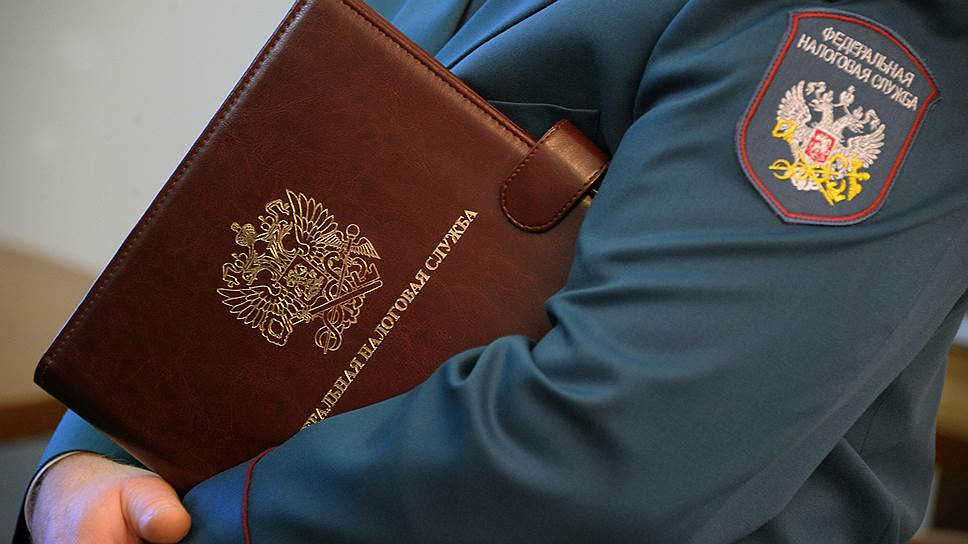The effectiveness of the tax system is largely determined by the quality of tax administration. The state sets tasks in this area, taking into account the current situation in the country. To date, the term “tax administration” has been replaced by the term “tax administration”.
Definition
Tax administration - a set of actions by the state to manage the country's tax system. So, with the help of laws, it establishes a tax list and determines the procedure in accordance with which they are seized. Tax administration extends to both the competence of official bodies and the organization of their activities. The third area in which the tax system is managed is setting tasks for the tax service, which monitors taxation and holds violators of the main provisions accountable.
So, the tax administration system covers 3 areas: legislative acts, organization of activities of entities in tax relations, control in the relevant field. It is considered as part of the management of the tax system. It is important to know that from the very beginning the word “administration” means state bodies that manage the territorial entity.

Based on this, tax administration is the actions of official bodies, and not separate regulatory legal acts in tax relations. Legislative bodies exercise control over taxation. In terms of the activities of official bodies, tax administration ensures the implementation of key acts.
State bodies that control taxation actually manage tax relations. In fact, a number of bodies are involved in the tax administration system. The most important of them: the Ministry of Finance, the Ministry of Economic Development and Trade, the Federal Tax Service, etc. Part I of the Tax Code of the Russian Federation transferred most of the powers in tax administration in the Russian Federation to the RF Ministry of Finance. Other organs interfere in this process to a much lesser extent.
Organs tax administration primarily exercise control over compliance with laws in the relevant field. They actually monitor each tax participant. However, the tax administration of Russia includes not only the activities of official bodies.
Items
The main elements of the tax administration of the Russian Federation include: supervision of compliance with the requirements of the law, supervision of the legality of the activities of tax authorities, providing taxpayers in organizational, methodological and analytical terms.
The first element is the main purpose of tax services. The main features of the tax idea itself suggest that those who do not pay the fees will be punished. It is impossible to control this without tax administration bodies, therefore they are extremely important, and in legislative acts there are many nuances in the activities of this type of bodies. The main forms of control over the calculation of payments are desk and field tax audits.
With the development of a market economy, tax administration is constantly being improved. It is aimed at ensuring that the balance of interests of the state and taxpayers is observed. Tax laws are binding on both parties.With the development of tax administration, procedural norms of legislation begin to play an increasing role.
With particular care they exercise control within departments, checking taxpayers several times. Often carry out a tax audit, which allows you to control the results of the activities of tax authorities, to solve all kinds of problems of tax administration and disputes between parties to relations. Also, data on disputes are systematized, cases that were provoked by the fact that there are gaps in the legislation are highlighted - the laws are not perfect.

The activities of tax authorities never happen without improving tax administration. A qualitative organization of the process is necessary: a structure should be formed, taxpayer reports on payments should be issued. You need to check them, make decisions on sanctions, predict tax payments.
As for control, it is mainly carried out in two directions:
- control over the calculation and payment of taxes;
- control over compliance with the requirements of the law.
Taking into account the competence of executive bodies, administration is carried out at two levels. The first level subjects are the Ministry of Finance of the Russian Federation and the Federal Tax Service. They develop special measures in tax administration. Improving the effectiveness of this area is their priority. They also strive to improve laws in this area, forecast and plan tax revenues to the budget, and take into account the analysis of payments.
The second level of subjects is the territorial tax authorities, branches of the Federal Tax Service of the Russian Federation. They are involved in tax control procedures for following the requirements of laws by lower authorities in this service. The scope of their competence includes the provision of deferrals and holding liable for various types of offenses.
Since 2017, the administration of insurance contributions to the tax inspectorate has attached the legislation of the Russian Federation. That is, the task of managing the procedures associated with compulsory social insurance, insurance premiums, solve the tax authorities. Since 2017, these contributions have been classified as taxes.
It is important to know that the effectiveness of tax administration is determined by many legislative standards, the collection and analysis of information related to inspections, and the development of measures to improve structures in the tax sphere. Thanks to the high quality of work, authorities can identify gaps in the tax sphere. For example, loopholes in the law are often found that allow taxpayers to minimize the level of tax payments and to avoid tax payments. Having discovered this, the tax authorities apply a number of measures to eliminate them.
For this reason, taking into account these nuances, the concept of “tax administration” is already the term “tax system management”, but at the same time it is wider than “tax control”.
Content of the term
So, the concept of “tax administration” includes the following points:
- actions related to the control over compliance with the requirements of the law by both taxpayers and tax authorities;
- development of proposals for improving the process of tax accounting, control over their turnover;
- actions related to ensuring the control functions of tax authorities; These include organizational, methodological, analytical and other types of materials.

At present, the Federal Tax Service of the Russian Federation carries out two additional tasks: the process of registration of taxpayers and bankruptcy proceedings.
The Tax Code does not contain an explanation of these tasks.For this reason, they do not belong to the concept of managing the tax system, but the main reason why the Federal Tax Service of the Russian Federation was involved in the process is that they are extremely important for the proper implementation of the tax collection procedure, therefore these functions are included in the tax administration as a direction of activity tax authorities.
About the principles
Management of the tax system is based on a number of principles. One of them is the principle of minimum costs in tax collection and tax control. The main characteristic of the effectiveness of tax administration bodies is that they provide a minimum of tax collection costs, follow all the requirements of the law, including the content of departments and services necessary for the process.
About Reforms
The first stage of the tax reform, which is characterized by a fiscal focus, was distinguished by the presence of a number of shortcomings. Thus, imperfections were discovered in the field of principles of tax administration. In addition, it was revealed that the elaboration of laws was carried out inadequately. The third main drawback of the system is flaws in the relationship of the official tax authorities with each other.
In such conditions, the main task of this time period appeared - to provide, with a budget deficit, the necessary amount of tax payments from the population. The effectiveness of the control of the official bodies of the Russian Federation was initially extremely low. All this indicates the need to adjust the functions of tax administration.
Dodging problem
Practice has proved that the most efficient administration and the most favorable conditions for the state are the most important direction in solving the difficulties associated with tax evasion.
Often, faced with an obstacle in practice, the state tightens measures related to tax collection, that is, increases the administrative burden and reduces the level of taxation, but this position is generally ambiguous.

Both procedures are closely related. Cutting down the number of taxes, lowering the burden on the population and improving the existing taxation system provoked a situation where issues of the tax management system became extremely important. Moreover, they have become issues of paramount importance.
Tax administration is recognized as the most pronounced area of management activity. Deficiencies in this area lead to a sudden reduction in the volume of funds flowing into the state budget, and lead to an increase in the chances of a collision with tax violations. Often a violation of the balance of inter-budgetary relations between subjects and the center is recorded, which leads to an increase in social conflict in society, and such a situation is extremely undesirable for the state. It is important that the culture of the tax sphere is formed taking into account the interests of each participant in tax relations.
Relations between tax authorities and taxpayers
The relationship between tax authorities and taxpayers is quite diverse, but they are nevertheless divided into 3 main varieties: administrative coercion, regulated alternatives, friendly partnership. Depending on the official tax policy of the state, they are found in different proportions. Control activities associated with them are carried out in different ways.
About coercion
There are a number of methods of administrative coercion. So, tax sanctions are applied, bank accounts are seized, other property of taxpayers and so on. Taxes are always characterized by a duty to pay, and for this reason these measures are always and everywhere applied.
After the entry into force of the Tax Code of the Russian Federation, a different type of tax system management method has spread - the method of regulated alternatives. Its essence is that taxpayers independently choose legal options for the legal form of carrying out activities, methods for fulfilling tax payment obligations, but as soon as a behavior option is chosen, it turns into an obligation for the subject of tax relations.

In a number of states, the transition from coercive methods to cooperation with those who pay taxes has been declared.
The use of the third method has begun recently. For a long time it was not used on the territory of the Russian Federation, since the tax management system was not developed sufficiently. The second reason - the state of tax administration was reflected in the interaction of subjects of tax relations.
However, new legislation has settled transfer pricing for tax purposes. They included agreements between entities in this field. In addition, the budgets of the entities began to form, based on the present financial opportunities for a positive response to statements on investment tax loans. The application of this method also paid off in situations in which the law did not allow to highlight the necessary sequence of taxation of financial results in complex transactions and in matters of innovative financial products.
Using these three methods at the same time allowed to resolve the issue related to the fiscal task of the tax management system, which led to the formation of a new type of relationship between the authorities and taxpayers. The use of the second and third methods leads to the strengthening of the regulatory aspect of the tax management system, when it comes to both the state economy and smaller entities.
About under-receipt of taxes
Existing norms no longer correspond to the needs for economic development of individual areas. They should be reviewed and adjusted as soon as possible. The tax control methods used have lost the ability to track new schemes to minimize tax payments and to block opportunities for taxpayers to evade taxation.
When the reasons why tax payments are not fully paid to the budget are analyzed, it will be necessary to change the structure of the official bodies. It turns out that the taxation methods themselves also need to be adjusted.

The state in which the tax management system in the country is located is the main criterion by which the competitiveness of the tax system of the state as a whole is assessed. The main conditions for improving the quality of tax administration are improving the organizational structures of tax authorities, strengthening their bases, and applying the latest methods in exercising control. It is important to change the methodological foundations of the process, carefully select personnel for conducting inspections and ensure the appropriate qualification level of employees.
At this stage in the development of tax administration, the international cooperation of tax services of many states is expanding. So, one-time and complex consultations take place, mutual exchange of information on innovations in tax legislation is carried out. Extensive work is underway to eliminate the possibility of tax evasion among the population.
Application of new technologies
Tax authorities are increasingly using new technologies in the course of their activities. For example, a whole system of “Tax-3” was introduced. It contains all the information about taxpayers. In 2015, the first block of functions was introduced for the official registration and accounting of taxpayers.
Now in the Russian Federation, these processes are carried out in an online database. In the same year, they began to use the second block to exercise control over the taxation of individuals. At the moment, it is carried out at the federal level in the latest system. A single database of information on property taxes, property, facts of ownership of real estate was formed. At the moment, the tax authorities have formed a single notice of payment of transport, property, land taxes for individuals and are sending it out.
Taxpayers can use 48 electronic services that are published on the service’s website in order to quickly and efficiently resolve a number of issues that are related to the relevant request to the tax authorities. In addition, many issues were formalized, on which people turned to official bodies. Currently, the average waiting time across the country is 13.5 minutes.
All these measures led to more efficient management of the tax system in the state. Revenues to the budget of the country have been established, and the methods of tax administration continue to expand.
On the attitude towards the taxpayer
According to the criterion of attitude to the taxpayer, tax administration is divided into two varieties - differentiated and neutral. In the first case, the population is divided into bona fide and unscrupulous taxpayers. Differences between them are reflected in the control and provision of preferences. Measures are taken for each based on his behavior.
In relation to bona fide taxpayers, the state introduces various benefits, and in relation to the second category it applies strict measures: tax evaders are deprived of all benefits and concessions.

Neutral management of the tax system is based on the law without additional norms and delimitation of taxpayers. It is under such a system that taxation is carried out in the Russian Federation. The concept of “good faith” in the Russian tax sphere does not mean anything.
Measures related to tax control are proactive and simultaneous. The second approach is based on a sample of cases of tax evasion, the use of new schemes to reduce tax payments to a minimum. The main drawback of the approach is the fight against already committed facts of violation of laws. For this reason, the tax service from the very beginning “loses” to taxpayers in terms of knowledge of gaps in laws. A preventive approach is more labor-intensive, but using it, tax authorities prevent the occurrence of circuit operations.
